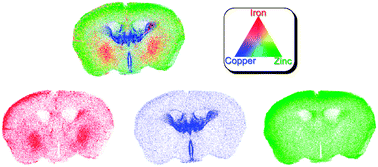Prion protein expression level alters regional copper, iron and zinc content in the mouse brain†
Abstract
The central role of the prion

Maintenance work is planned for Wednesday 1st May 2024 from 9:00am to 11:00am (BST).
During this time, the performance of our website may be affected - searches may run slowly and some pages may be temporarily unavailable. If this happens, please try refreshing your web browser or try waiting two to three minutes before trying again.
We apologise for any inconvenience this might cause and thank you for your patience.
* Corresponding authors
a
Molecular and Environmental Science Research Group, Department of Geological Sciences, University of Saskatchewan, 114 Science Place, Saskatoon, Saskatchewan, Canada
E-mail:
jake.pushie@usask.ca
Fax: (306) 966-8593
Tel: (306) 966-8592
b Department of Biochemistry and Molecular Biology, The McCaig Institute for Bone and Joint Health, University of Calgary, Calgary, Alberta, Canada
The central role of the prion

 Please wait while we load your content...
Something went wrong. Try again?
Please wait while we load your content...
Something went wrong. Try again?
 Fetching data from CrossRef.
Fetching data from CrossRef.
This may take some time to load.
Loading related content
